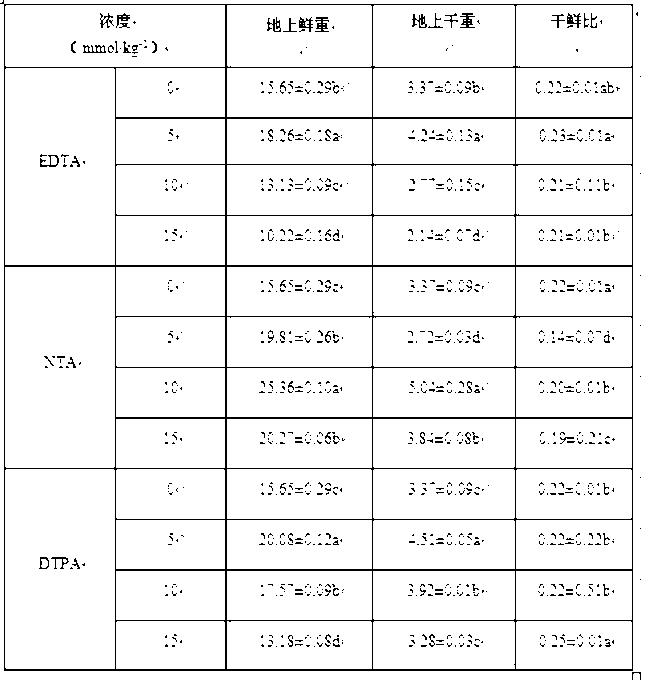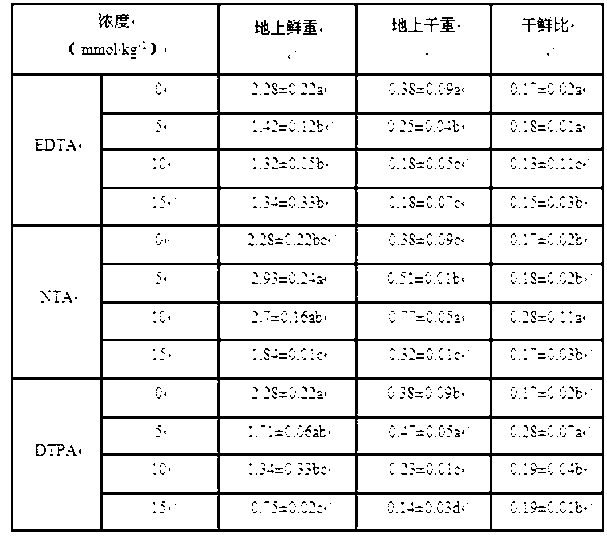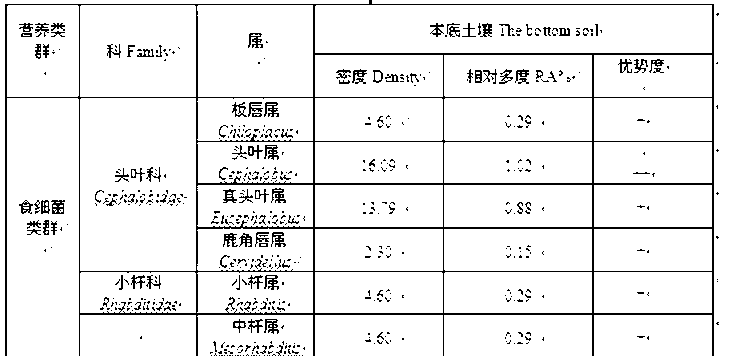Method for regulating and controlling festuca arundinacea lawn soil nematode community structure by adopting complexant
A technology for soil nematodes and tall fescue grass, which is applied in the restoration of polluted soil and other directions
- Summary
- Abstract
- Description
- Claims
- Application Information
AI Technical Summary
Problems solved by technology
Method used
Image
Examples
Embodiment 1
[0075] (1) Pass the collected soil samples through a 2 mm sieve and mix them for use; use tall fescue for lawn plants, and use disodium edetate, aminotriacetic acid or diethyltriaminetetraacetic acid as a complexing agent for use;
[0076] (2) The test uses a plastic flower pot with a height of 25 cm and a diameter of 12 cm. After washing and drying the gauze, it is cut into a round shape with a suitable size to fix the bottom of the flower pot. Each container weighs 2 kg, and 4.5 g of tall fescue seeds are sown;
[0077] (3) Quantitative water supply every day during the experiment to meet the needs of plant growth. When the tall fescue grows to the 28th-35th day, add the concentration of 5-10mmol·kg -1 EDTA, NTA or DTPA;
[0078] (4) During the cultivation period, the temperature was 25°C, the relative humidity was 31%, and the light conditions were natural incident light. The whole experiment lasted 120 days. On the 60th day of the experiment, the aboveground part of tall ...
Embodiment 2
[0081] (1) Pass the collected soil samples through a 2 mm sieve and mix them for use; use tall fescue for lawn plants, and use disodium edetate, aminotriacetic acid or diethyltriaminetetraacetic acid as a complexing agent for use;
[0082] (2) The test uses a plastic flowerpot with a height of 25cm and a diameter of 12cm. After washing and drying the gauze, it is cut into a round shape with a suitable size to fix the bottom of the flowerpot. Each container weighs 2kg, and 4.5g of tall fescue seeds are sown;
[0083] (3) Quantitative water supply every day during the experiment to meet the needs of plant growth. When the tall fescue grows to the 28th-35th day, add the concentration of 5-10mmol·kg -1 EDTA, NTA or DTPA;
[0084] (4) During the cultivation period, the temperature was 34°C, the relative humidity was 48%, and the light conditions were natural incident light. The whole experiment lasted 120 days. On the 60th day of the experiment, the aboveground part of tall fescue w...
PUM
 Login to View More
Login to View More Abstract
Description
Claims
Application Information
 Login to View More
Login to View More - R&D
- Intellectual Property
- Life Sciences
- Materials
- Tech Scout
- Unparalleled Data Quality
- Higher Quality Content
- 60% Fewer Hallucinations
Browse by: Latest US Patents, China's latest patents, Technical Efficacy Thesaurus, Application Domain, Technology Topic, Popular Technical Reports.
© 2025 PatSnap. All rights reserved.Legal|Privacy policy|Modern Slavery Act Transparency Statement|Sitemap|About US| Contact US: help@patsnap.com



